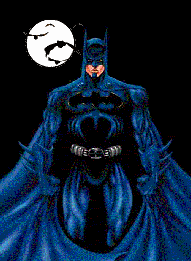

 Graphic Novels of the Mid-1980s to Late 1990s:
Graphic Novels of the Mid-1980s to Late 1990s:
The Defining Period of Graphic Novels & Women Readership and Exclusion

Hello, and welcome to my research project for PUB 801: History of Publishing, taught by Dr. Amanda Lastoria in Spring 2021 for Simon Fraser University's Master of Publishing program.
This research project centres on the history of graphic novels during the the mid- to late 80s to late 90s—a defining period for the format, which saw the publication of several immensely impactful graphic novels for adult readers that drew nationwide attention in America and helped to legitimize comics as literature.
Packaged in the bygone aesthetics of the early web, this project is presented in the spirit of Geocities-esque blogs and fansites.
The project provides (a) a brief summary of the history and issues surrounding the term graphic novel, (b) a timeline presenting an overview of the history of comics and graphic novels from the 1930s to 2000s, and (c) a delve into several defining graphic novel works of the 20th century—namely, Frank Miller's The Dark Knight Returns, Alan Moore and Dave Gibbons's Watchman, Art Spiegelman's Maus, and Neil Gaiman's The Sandman—with regards to the overarching anti-feminist history of the industry and the ways in which the industry has excluded and been hostile to women readers.
"When I entered the profession—I was present at its birth—comic books, which were then called magazines, were dismissed as cheap entertainment for kids. They were disdained by the arbiters of our culture. I myself had only a visceral belief in the viability of the art or its future as acceptable literature. There was no evidence of its endurance as anything other than a fleeting fad of popular culture. History has proved otherwise."
—Will Eisner, Foreword to The Rise of the Graphic Novel, ix.





